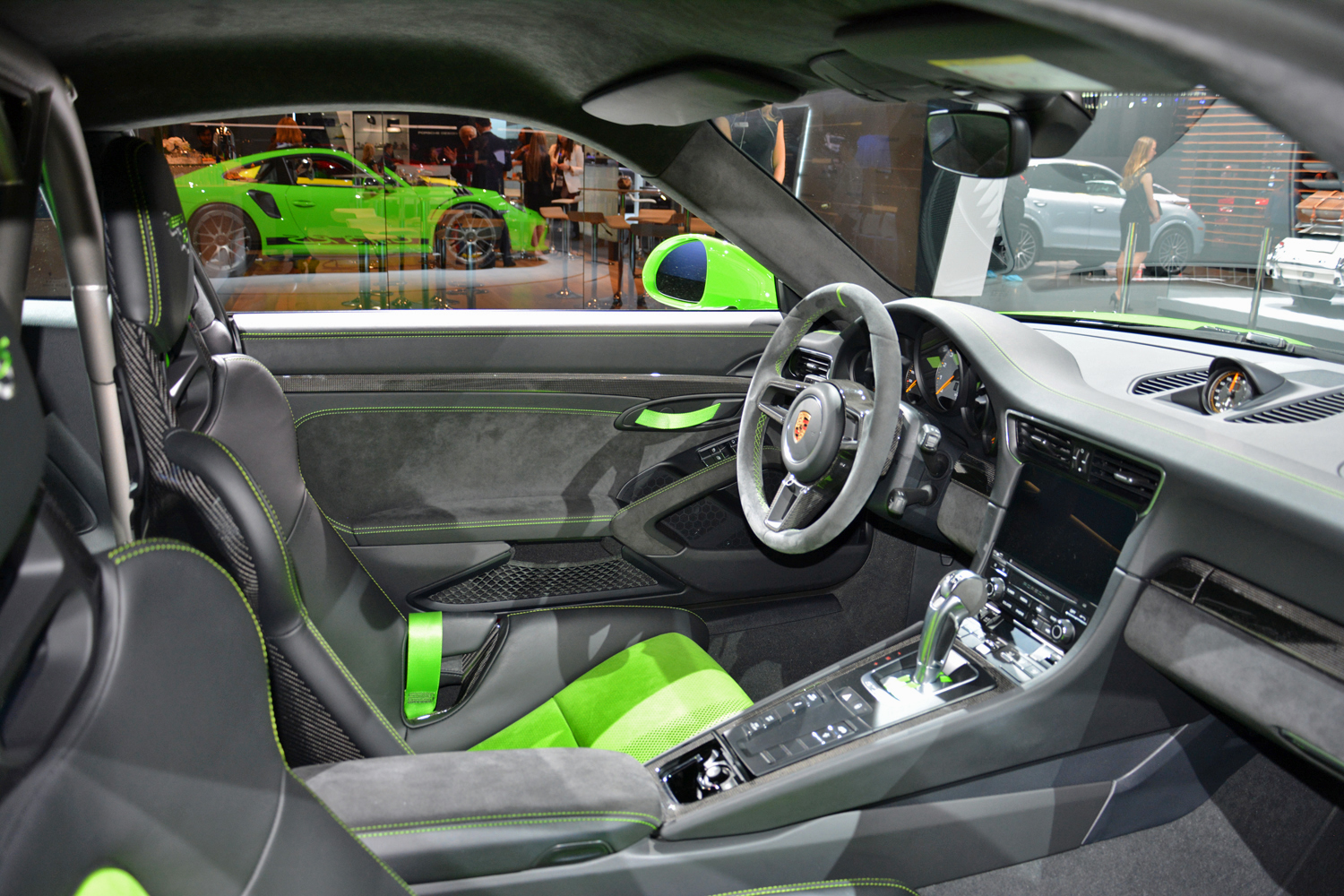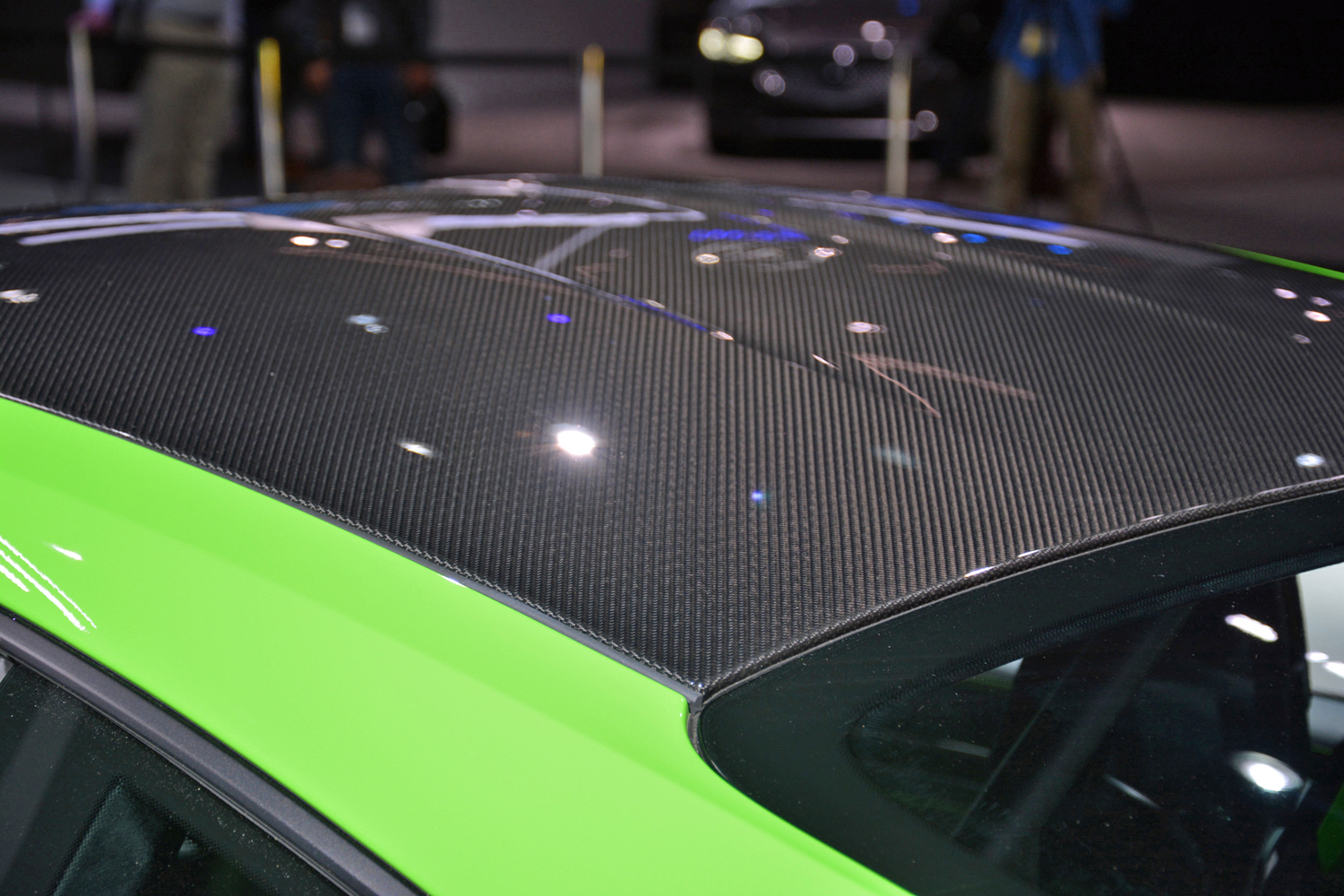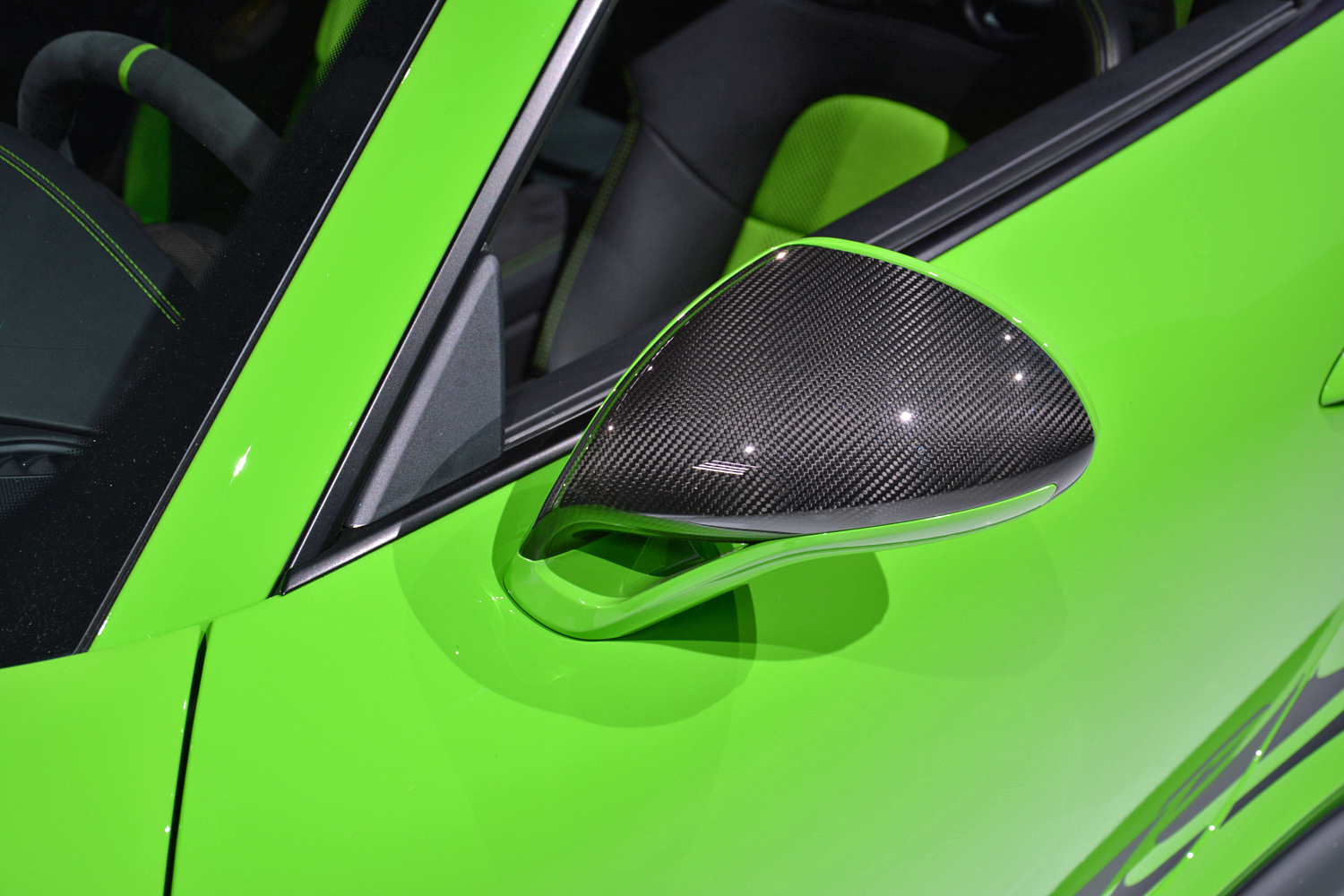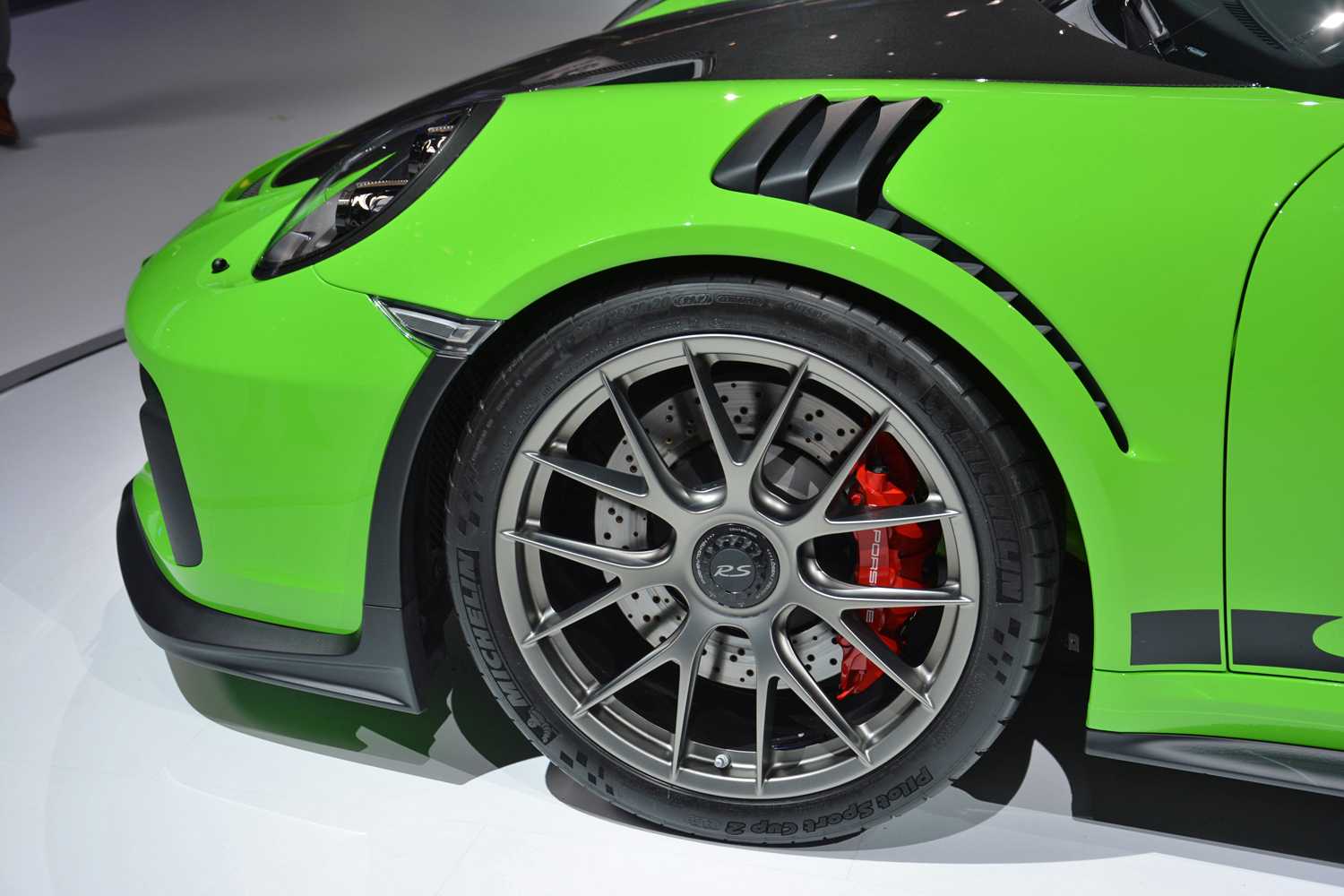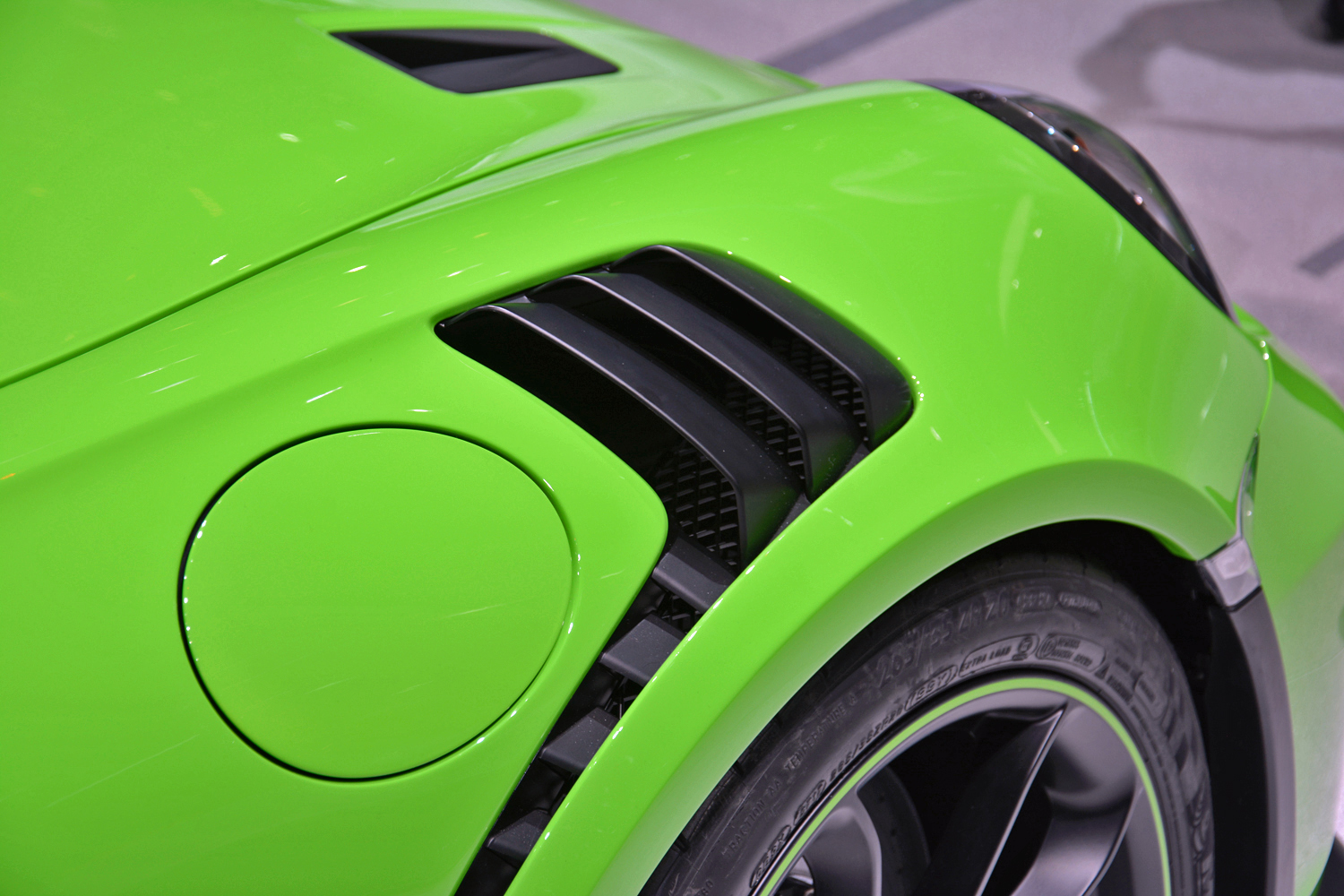The 2019 Porsche 911 GT3 RS unveiled recently at the Geneva auto show is offered with an optional Weissach package. What in the world is that, you ask?
Named after the German town Porsche’s development center is in, it leverages technology that seeped down from the world of racing to shave about 40 pounds from the GT3 RS, which is not exactly a fat car to begin with. The package adds lightweight components such as carbon fiber shift paddles, carbon fiber trim on the steering wheel, and thinner carpet. It doesn’t sound like much on paper but it all adds up fairly quickly. Buyers who want an even lighter car – Porsche told us most of them do – can order magnesium wheels, too.
Digital Trends chatted with Andreas Preuninger, the head of Porsche’s GT division, to get insight on why the 911 GT3 RS received a Weissach package and what’s next in the world of saving weight.
Digital Trends: This is the first time you’ve offered the 911 GT3 RS with a Weissach package. Why now?
Andreas Preuninger: We had it on the 918 Spyder and it was a great success. We thought of making it available on the 911 RS range as well because it makes sense. Most buyers look closely at weight.
“We try to be in touch with our customers as much as possible, either at events or on the track.”
We try to be in touch with our customers as much as possible, either at events or on the track. A lot of the people who own these cars told us they wish to make them lighter, they want to incorporate more lightweight materials. This is our answer to this need, which is obviously very high.
Nearly everybody wants this not very inexpensive option. On the 911 GT2 RS, the take rate is 90-percent plus. We think it’s going to be similar on the 911 GT3 RS. We didn’t expect it to be that high, which causes problems in our parts factories because we end up with a need for magnesium wheels that we didn’t count on. 85 percent of the global magnesium wheel market, including race cars and motorcycles, is taken by Porsche for that option.
When you developed the Weissach package for the GT3 RS, which lessons did you apply from the 918 Spyder program?
[On the 918], the package consisted of visible carbon fiber parts. If you look at the [GT3 RS] without Weissach, it’s relatively calm. We don’t show off the carbon fiber, though there is carbon fiber. With the Weissach package we really, clearly show it off. It looks more brutal, racier, more track-focused. Look at the wheels, as well. The magnesium wheels were part of the 918’s package. We found out it was an option you could really feel as a driver in terms of throttle response and turn-in.
You mentioned the Weissach package makes sense for RS cars. Does it make sense for non-RS models?
I think saving weight makes sense in all cars nowadays. A car that is light is always nicer to drive and it uses less gas; this is physics. I think demand from people that go to the track is way higher on the RS than on the GT3 or the Carrera, but it’s definitely something we could look into. As I said, we have to build that up slowly otherwise we can’t supply the parts. I won’t rule out some lightweight package will find its way to other model lines in the future. We have nothing planned yet, we’re very busy; don’t expect to see the Cayenne Weissach next month.
RS cars represent a bridge between the track and the showroom. How do you factor Formula E into that equation?
“This is what makes the company successful, not being stubbornly stuck in the past but looking around and being open-minded.”
We will see. It would be unusual if there isn’t a transfer of experience but Formula E is really only beginning now so we will have to wait and see. We are open to everything. This is what makes the company successful, not being stubbornly stuck in the past but looking around and being open-minded. This applies to the ultra-hardcore analog cars like the GT models as well as to the digitalization and e-mobility side. The aim, as a company, is to be best-in-class in both of these very far removed strategies and anything in between.
What’s next? How much lighter can a 911 get?
If you look at legislation around the world and certification needs, we’re very close to what can be done while complying with safety and emissions regulations. On a race car you can leave out the catalytic converter or take out the carpet. We looked at how much weight we’d save by taking out the carpet and it wasn’t much. And, when you toss out the carpet or the glovebox it feels cheap. There are rattling noises, you’re looking at holes in the dashboard. It’s not desirable.
If we took out everything we’re legally allowed to we’d save maybe [16 pounds] while sacrificing a lot of creature comforts. With an engine that makes 520 horsepower, it’s not noticeable. It’s like taking out the A/C. It’s actually possible on this car, but it’s not something I would recommend.
Does the manual transmission have any kind of future in RS cars?
No. Offering one would be technologically possible but we think with the Touring package and the available manual transmission in the normal GT3 we have it sorted in the correct way.
“You have to be the strict father sometimes and say ‘no, it’s not good, it doesn’t make sense.'”
There’s not much demand for one. I don’t think we’d have more than a 10-percent take rate. Almost everybody understands our strategy. If a buyer wants a manual he can have one, but it will be in a standard GT3, not in the RS. Though, I’m sure we could sell a GT3 RS with a manual, no doubt, but not everything that sells makes sense. You have to be the strict father sometimes and say “no, it’s not good, it doesn’t make sense.”
Besides, we have one production line for our sports cars. The more variants we build, the more complicated it gets. The parts have to arrive just in time to a certain spot on the production line. It’s so narrow that you couldn’t fit one additional variant because that would mean another cart with parts.





